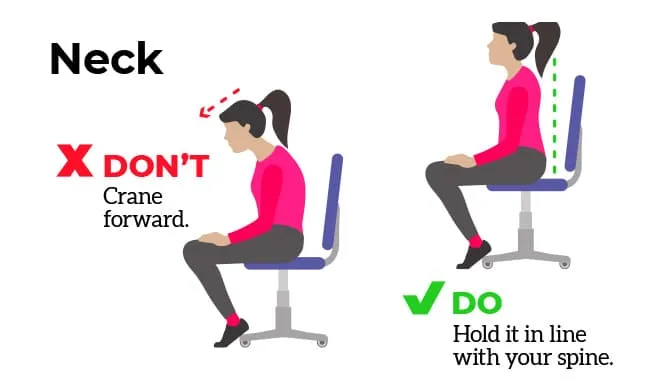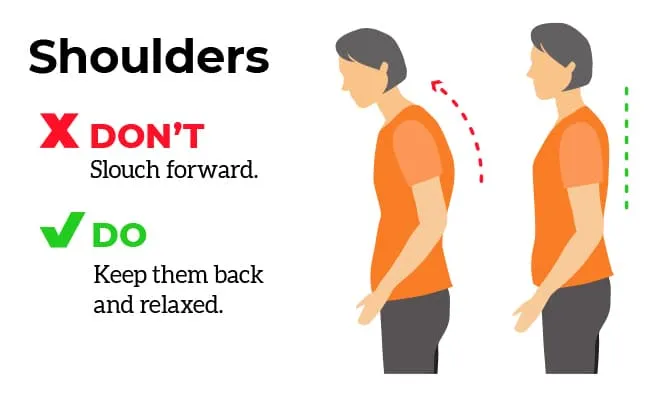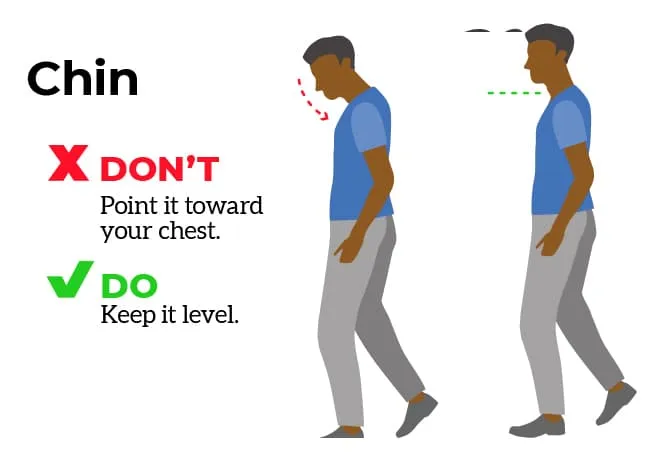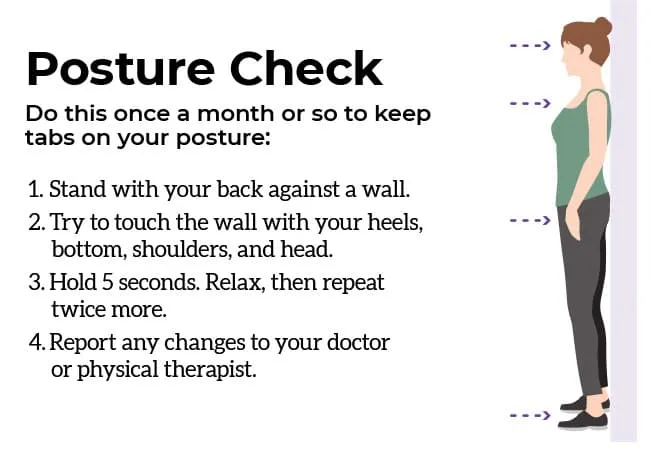Your mom was right when she told you to "sit up straight." Good posture can help prevent back and neck pain. It also aids your balance.
For people with an inflammatory type of arthritis called ankylosing spondylitis (AS), posture is even more important. The pain from AS can cause you to adopt bad posture habits. In serious cases, AS can fuse some of the small bones in your spine together. This leads to a stooped-over posture.
Regular exercise is essential to keep AS from getting worse. It protects your posture and helps ease pain and stiffness.
Along with a fitness program, you can take steps throughout your day to correct posture problems. It starts with being aware of how you hold your body. Aim to keep your chin level and relax your shoulders. Don't let them hunch forward.
Sitting Down

If you sit for long stretches for work or school:
- Use a chair with a high, hard back to keep your spine straight.
- Make sure your tailbone touches the back of your chair. Try a small cushion, rolled-up towel, or lumbar support behind your lower back for extra support.
- Your feet should be flat on the floor, with your knees forming a right angle. If your chair is too high, use a footrest.
- Don’t lean forward or rest your elbows in front of you.
- Avoid crossing your legs. Keep your ankles in front of your knees.
- Don’t stay in one position for too long. Take frequent breaks to stand up and move around.
Standing

When you’re on your feet:
- Keep your head in line with your body, not ahead of it.
- Don't lock your knees.
- Keep most of your weight on the front part of your feet.
- If you must stand for a long time, keep shifting your weight from your toes to your heels or from one foot to the other.
Walking

To maintain good posture when you walk:
- Pull in your midsection to keep your stomach muscles engaged.
- Let your arms and hands swing easily at your sides.
- Look forward instead of at the ground.
- Don't keep your shoulders stiff, but allow them to move naturally.
Lying Down
When you sleep, keep your spine as straight as possible. To do that:
- Use a firm mattress.
- Sleep flat on your back.
- Don't use a pillow. If that's uncomfortable, use a small or thin pillow, or a rolled towel.
- Aim to keep your legs straight or just slightly bent. Avoid sleeping in a curled-up position.
If you find it hard to sleep like this, talk to a physical therapist about other options.
Posture Braces and Posture Training

While it may hold you upright temporarily, a neck or back brace won't do much to help your posture. Regular exercise is much more effective.
A physical therapist can create a program that includes posture training as well as moves to boost your strength and flexibility. They can also help you find ways to be more comfortable in your daily life.

